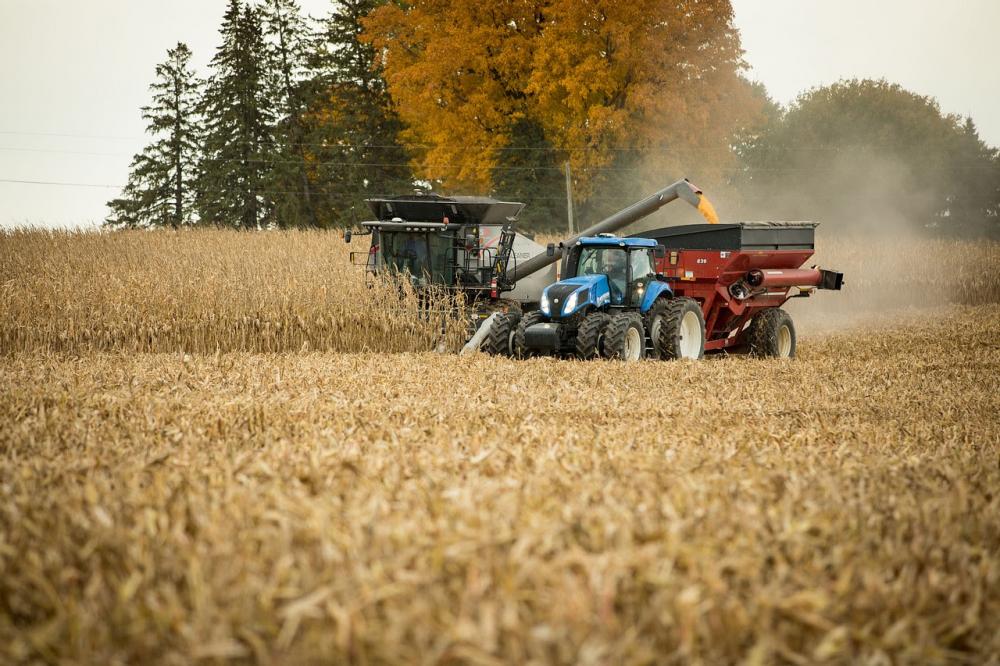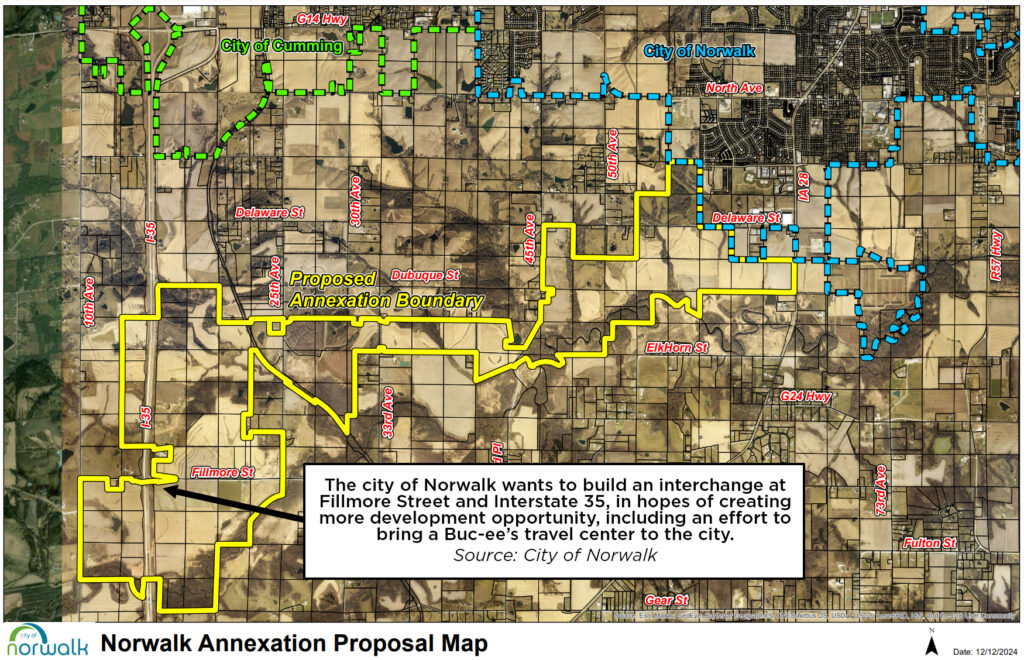Farmers ready to put 2020 behind them

MICHAEL CRUMB Mar 30, 2021 | 3:33 pm
6 min read time
1,470 wordsAll Latest News, Economic Development, Statewide NewsPhoto contributed by Iowa Corn Growers Association
Iowa farmers are waiting to start the “dance” this spring after a year of uncertainty brought on by drought, the coronavirus pandemic, trade worries and the derecho that damaged 43% of the state’s corn and soybean crop.
More than 3.5 million acres of the state’s corn crop, and 2.5 million acres of soybeans, were affected by the storm that brought winds in excess of 100 mph across a large area of the state. As much as 60 million bushels of storage was also damaged by the storm.
The storm followed a year of concerns over drought, something that continues in 2021 with a large swath of northern and eastern Iowa still abnormally dry, with a pocket of moderate to extreme drought over much of northwest Iowa, according to the latest U.S. Drought Monitor.
For Benton County farmer Lance Lillibridge, there’s some good news for farmers as they look to begin getting seeds in the ground next month.
“China is buying a lot of corn, Japan just bought some corn and Mexico is buying some corn, so demand is good and that’s fantastic,” said Lillibridge, vice president of the Iowa Corn Growers Association. “Demand is also coming back on the ethanol side, and that’s good.”
But he’s cautiously optimistic heading into the new growing season.
“I look at it as there’s going to be a problem,” Lillibridge said. “We don’t know what it is yet. We don’t know if it will be the weather, or if it’s going to be political.”
One bright spot is that prices for corn are the highest they’ve been in years.
Prices on the futures market on the Chicago Board of Trade are around $5.40 to $5.50 a bushel for corn, compared with about $3.50 a bushel at this time in 2020. For soybeans, the price is around $14 a bushel, compared with about $8.50 a bushel last year.
“We’re in a much better spot than people would expect,” said Chad Hart, a farm economist with Iowa State University.
Despite lingering issues with drought and the derecho, “we have … much stronger prices in the agricultural markets than we had throughout 2020,” he said.
“You’re seeing a much better economic outlook for farmers as they get ready to plant this year,” Hart said. “Having a little better price heals a lot of economic wounds, and it makes things a bit more exciting to get out there and be working the ground again, so as farmers get ready to plant this year, they know they’re staring at some of the best prices they’ve seen in almost a decade.”
The stronger prices are partly a result of the problems experienced in 2020.
Those events kept supplies smaller, which drove prices higher, but there has also been a big surge in international demand for agricultural products, Hart said.
That happened because of both increased consumption patterns resulting from increased population growth and higher incomes, and the need to have more food in storage resulting in more buying and stockpiling, he said.
“We’re still not through the pandemic,” Hart said. “The idea is once people see some of the market disruptions we experienced last year, those stock-building habits tend to last at least a little while, but you want to make sure you get through this rough patch before you allow those stockpiles to go back down to pre-hazard levels. It takes a little bit for us to adjust back to more normal levels.”
U.S. Department of Agriculture projections for this year show that 15.1 billion bushels of corn will be planted this year nationally. That is only slightly up from last year’s projections.
In 2020, about 15 billion bushels of corn was projected, but drought and the derecho reduced production to about 14.2 billion bushels. Despite the reduced production, 2020 still saw more corn and soybeans harvested than in 2019. About 4.5 billion bushels of soybeans were produced in the U.S. in 2020, up from about 4.1 billion bushels the previous year.
Iowa specific projections aren’t done by the USDA until later in the season.
About half of the nation’s soybeans (2.2 billion bushels) are exported, Hart said. About 2.6 billion bushels of the country’s corn crop is exported.
Lillibridge said the higher prices currently being seen can be misleading because most farmers locked in their prices at the lower levels a year or more ago when they had more corn to sell.
“Even though we’re possibly enjoying higher prices, sometimes we just enjoy seeing them on the TV or reading them in the newspaper, and that’s all the enjoyment we get out of it,” he said. Most folks that have a marketing plan probably marketed a lot of $3.50 and $4 corn … so if they sold it at $3.80, they don’t have it to sell at $5.50. Although we see really nice prices on the Board of Trade right now, that doesn’t necessarily mean a farmer is selling it for those prices right now. Far from it.”
Even if they have corn to sell at the higher prices, they probably have less of it to sell, he said.
“Instead of selling 200 bushels an acre, they might only be selling 100 or 150 bushels an acre, so it takes quite a bit of cash to make up for those losses,” Lillibridge said.
The higher commodity prices also traditionally lead to higher costs for farm inputs, such as fertilizer and feed, that farmers have to pay. And there are still issues with the supply chain caused by the pandemic, Lillibridge said.
“There’s still problems with supply, such as parts,” he said. “Some of that stuff isn’t readily available. If you have a part that breaks down on a planter or applicator and you can’t get it for a couple of weeks, that’s not going to be a good situation.
He said there also is still a lot of debris from last year’s storm scattered across fields that needs to be cleaned up before crops can be planted.
“I’m amazed at how much debris is out in the fields and how much cleanup there is that needs to happen,” Lillibridge said. “Machine sheds and bins, farm buildings, it’s scattered everywhere, and that will be problematic, too.”
Hart said a stronger farm economy will help both urban and rural economies in Iowa.
That was in part because of federal help in previous years to offset trade disruptions and
coronavirus relief payments last year.
“Those really started to show up the latter half of 2020, so rural communities were seeing more economic activity as that money was hitting farmers’ checkbooks,” Hart said. “Now, as we’re looking at 2021, while that government support is dropping, we’re seeing in the market that revenue is rising and hopefully rising fast enough to offset that loss of government payments, and I think that is helping.”
The market response of higher prices will lead to longer term growth and recovery than the government payments, Hart said.
“When their incomes are rising due to government support, most farmers look at that as it’s a short-term boost, but not necessarily something they can write into getting that long-term loan to buy a piece of equipment or to mortgage to add a section of land,” Hart said. “When you look at the futures market and see those prices are higher … it creates more of that sense of long-term growth in income and lends itself to those most expensive purchases, so it does help create more economic activity through our rural communities.”
Hart said people should continue to watch commodity prices along with production this year as a gauge for how the farm economy is doing.
“The other thing I’m going to watch is international demand, and what do exports look like for the agricultural community here,” he said. “If those export sales remain robust, that means the ag economy is in really good shape. If that falls back off then we’re going to have some issues again with the ag economy.”
Lillibridge said that despite the challenges of the past year, and potential challenges that lie ahead, he’s optimistic about 2021.
“If we can get past some of those challenges, maintain market prices and demand, then I think the farmer is going to be pretty happy,” he said.
Lillibridge hopes to be in the fields around April 20, if the weather cooperates.
“We want to make sure we’re on the top side of 55 [degree soil temperature] and a good 10-day forecast that ain’t going to let it go down. But if it’s April 20 and there’s a cold snap coming, we’re probably not going to turn any wheels. If it’s April 20 and we have 10 days of decent temperatures in the forecast, then let’s start the dance.”











